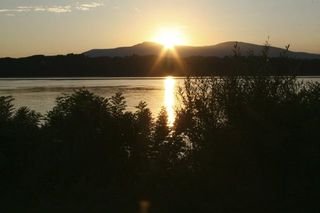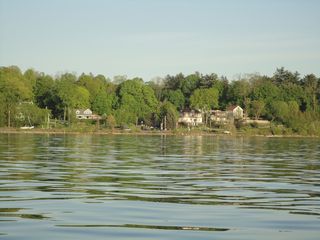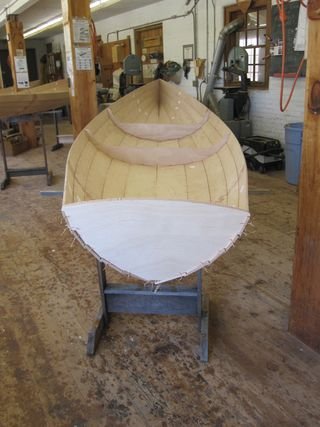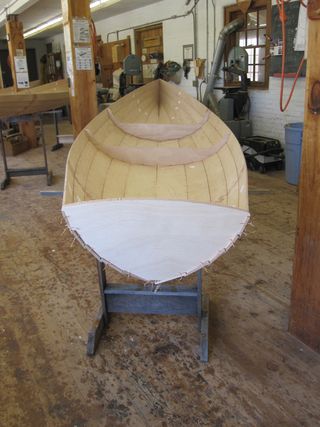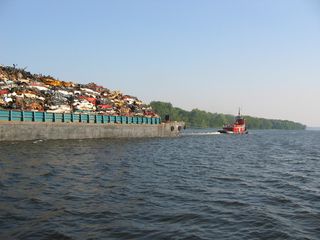 One spring, I loaded up my kayak with sleeping bag and food and pointed south on the Hudson River. I was traveling with a former student, Emmet, and we intended to take a few days, camping on islands and on the banks of the river, to make our way from my village of Tivoli to Manhattan (I write about this adventure in my upcoming book, MY REACH). This is the freedom of a river, to head out and see what you can see. And I did see many marvelous things on my journey, and lots that I wish I had not seen. Day four I passed the Indian Point nuclear power plant. Instinctively, we scooted to the western shore, giving the plant a wide berth.
One spring, I loaded up my kayak with sleeping bag and food and pointed south on the Hudson River. I was traveling with a former student, Emmet, and we intended to take a few days, camping on islands and on the banks of the river, to make our way from my village of Tivoli to Manhattan (I write about this adventure in my upcoming book, MY REACH). This is the freedom of a river, to head out and see what you can see. And I did see many marvelous things on my journey, and lots that I wish I had not seen. Day four I passed the Indian Point nuclear power plant. Instinctively, we scooted to the western shore, giving the plant a wide berth.
From water level, the towers loomed above me and the entire structure felt imposing. There are layers of red brick buildings smack against the river. Not a window in sight, as if whatever was contained inside shouldn’t be seen, and should not see out. I’d passed some large industry on the river—Trapp Rock up by Poughkeepsie, for instance, but nothing that felt ominous like the Indian Point plant. There are many reasons to protest nuclear power. In my life, the stories of Three Mile Island, Chernobyl and Fukushima are enough to convince anyone this is a risky source of energy. There are many reasons not to want a nuclear power plant so close to a major metropolitan area—9/11 is enough to show how vulnerable we can be. And there are many reasons not to want a nuclear power plant on the Hudson River. The plant rests on a small earthquake fault. And, the plant uses billions of gallons of water t o cool its towers and then spits this warmed water back into the river, altering the ecosystem. In the process, millions of fish are sucked into the plant and killed. But I had not thought about any of this with much care until I stroked past the plant low in my boat.
 Floating in a kayak on a big river I often feel tiny, especially next to tankers or the barges that shove north and south at all times of day and night (in this photo, a tanker is emerging around Magdalen Island--that little dot is me). But my river view is an important perspective, it’s the same view a beaver might have, or a great blue heron wading by the shoreline. In a kayak, there is an intimacy with the water, whether that water is clean or not, the sights beautiful or not. And I did not like being intimate with a nuclear power plant. It took experiencing the chill of Indian Point on a cool rainy spring day to make me care about shutting down the plant.
Floating in a kayak on a big river I often feel tiny, especially next to tankers or the barges that shove north and south at all times of day and night (in this photo, a tanker is emerging around Magdalen Island--that little dot is me). But my river view is an important perspective, it’s the same view a beaver might have, or a great blue heron wading by the shoreline. In a kayak, there is an intimacy with the water, whether that water is clean or not, the sights beautiful or not. And I did not like being intimate with a nuclear power plant. It took experiencing the chill of Indian Point on a cool rainy spring day to make me care about shutting down the plant.


